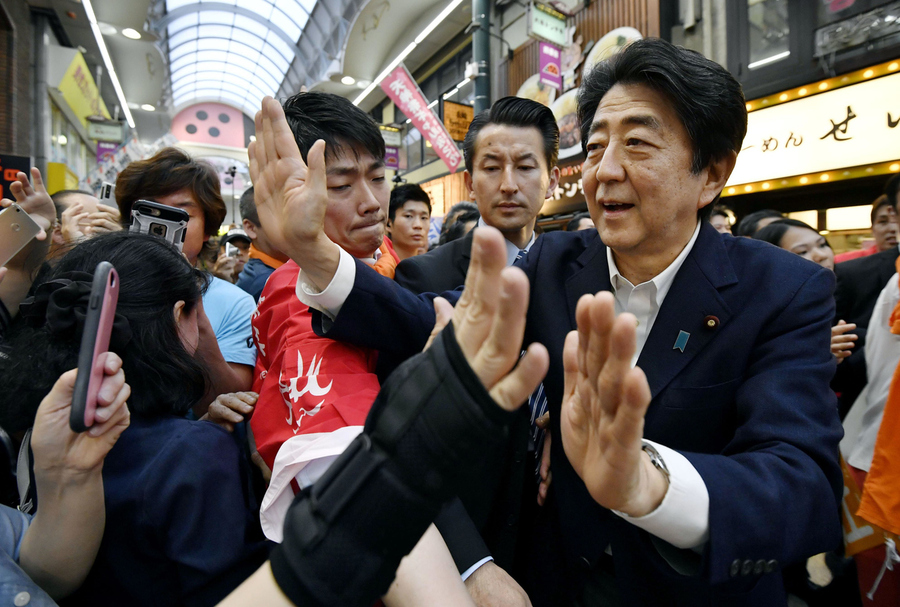 |
|
Japanese Prime Minister Shinzo Abe during a campaign rally in Osaka on July 6.
|
Wider range of restrictions could take place as early as next month
The Japanese government could impose further restrictions on exports to South Korea, the Japanese media has reported. Tokyo has already imposed export controls on components used in the manufacture of semiconductors and displays in what amounts to retaliation for a ruling by the South Korean Supreme Court awarding damages to the victims of forced labor during the Japanese colonial period. “The Japanese government is thinking of using these measures as an opportunity to press South Korea to implement appropriate management of raw materials,” Japanese public broadcaster NHK reported on July 8. “If there are no signs of improvement, the Japanese government believes it will have no choice but to remove South Korea from the list of countries that receive priority treatment for export management and to extend the tighter restrictions to other export items, such as machine tools and carbon fiber. As such, Tokyo is carefully watching to see how South Korea will respond.” Japan’s Foreign Exchange and Foreign Trade Act authorizes the government to restrict exports that it believes could be appropriated for military purposes. Exports can be restricted in two ways: the list method, in which restrictions are applied to items enumerated on a list, and the catch-all method, which allows the Japanese government to restrict a wide range of items that it believes could be put to military use, with the exception of lumber and food products. The export controls that the Japanese government imposed on semiconductors on July 4 represented the list method. The NHK report didn’t specify when restrictions on machine tools and carbon fiber might take effect. But since both of these categories appear on the list, restrictions could theoretically go into effect at any time. On June 19, Tokyo asked Seoul to set up an arbitration committee involving a third country, which is one of the conflict resolution steps in the two countries’ claims agreement, to address their disagreement about the ruling for forced laborers to receive damages. The agreement stipulates that South Korea must respond by July 18, and Japan might impose additional export regulations after that. The catch-all restrictions could take effect next month. On July 4, Japan’s Ministry of Economy, Trade, and Industry began canvassing public opinion about the option of removing South Korea from the white list of countries that receive preferential treatment under the Foreign Exchange and Foreign Trade Act. South Korea could be dropped from the list next month, in which case the Japanese government could impose export controls on specific products that aren’t on the current list if they pose security concerns. “If catch-all regulations go into effect, there’s no telling what products will be subject to the export controls,” a diplomatic source said. While the Japanese press has mostly taken a critical stance to Abe’s export restrictions, the Japanese public has shown considerable support. A poll of 1,146 individuals over the age of 18 on July 6–7 conducted by Japanese broadcaster TBS found that 58% of respondents said that tougher controls on exports of semiconductor materials to South Korea were appropriate, more than twice the share of respondents (24%) who said they were not. By Cho Ki-weon, Tokyo correspondent Please direct comments or questions to [english@hani.co.kr]






